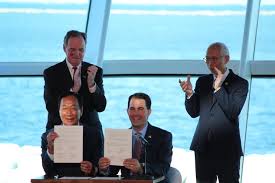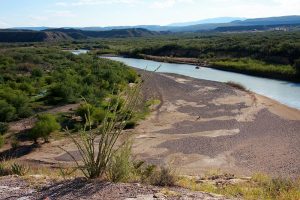Will the Foxconn project “transform” Wisconsin’s water resources?
Governor Scott Walker and Wisconsin Economic Development Corporation Secretary Mark Hogan have often said that the Foxconn project will have a “transformational” effect on Wisconsin. During Hogan’s recent appearance at the Law School’s Lubar Center for an On the Issues with Mike Gousha program, an audience member asked Hogan whether the project might be “transformational” in a negative way because of the potential impacts on water and the environment. Those misgivings are shared by many in the community, judging by the responses to a recent Marquette Law School Poll item reporting that 62% of Wisconsinites are either “very” or “somewhat” concerned that the plant “will have substantial negative impacts on water and the environment.”
 Nevertheless, as Hogan correctly pointed out in responding to the question, manufacturing has always been an important part of Wisconsin’s economy and culture. According to some recent estimates, Wisconsin companies produced over $56 billion of goods in 2016, accounting for over 18% of the state’s GDP and 86% of its exports. These firms have long had to comply with environmental regulations. Hogan maintained that, with a few exceptions spelled out in 2017 Wisconsin Act 58, Foxconn would be treated no differently than our existing industries, and would have to fully comply with all federal and state laws related to environmental pollution. In this post, I review the relevant parts of Act 58 and explore Foxconn’s potential impacts on water quantity and water quality.
Nevertheless, as Hogan correctly pointed out in responding to the question, manufacturing has always been an important part of Wisconsin’s economy and culture. According to some recent estimates, Wisconsin companies produced over $56 billion of goods in 2016, accounting for over 18% of the state’s GDP and 86% of its exports. These firms have long had to comply with environmental regulations. Hogan maintained that, with a few exceptions spelled out in 2017 Wisconsin Act 58, Foxconn would be treated no differently than our existing industries, and would have to fully comply with all federal and state laws related to environmental pollution. In this post, I review the relevant parts of Act 58 and explore Foxconn’s potential impacts on water quantity and water quality.

 ion people. Meanwhile, the Law School, working in partnership with the Milwaukee Journal Sentinel, has taken an increasing role and interest in studying various aspects of the “Chicago Megacity,” the region stretching from the Milwaukee area, across metropolitan Chicago, and into northwest Indiana. For example, see
ion people. Meanwhile, the Law School, working in partnership with the Milwaukee Journal Sentinel, has taken an increasing role and interest in studying various aspects of the “Chicago Megacity,” the region stretching from the Milwaukee area, across metropolitan Chicago, and into northwest Indiana. For example, see 